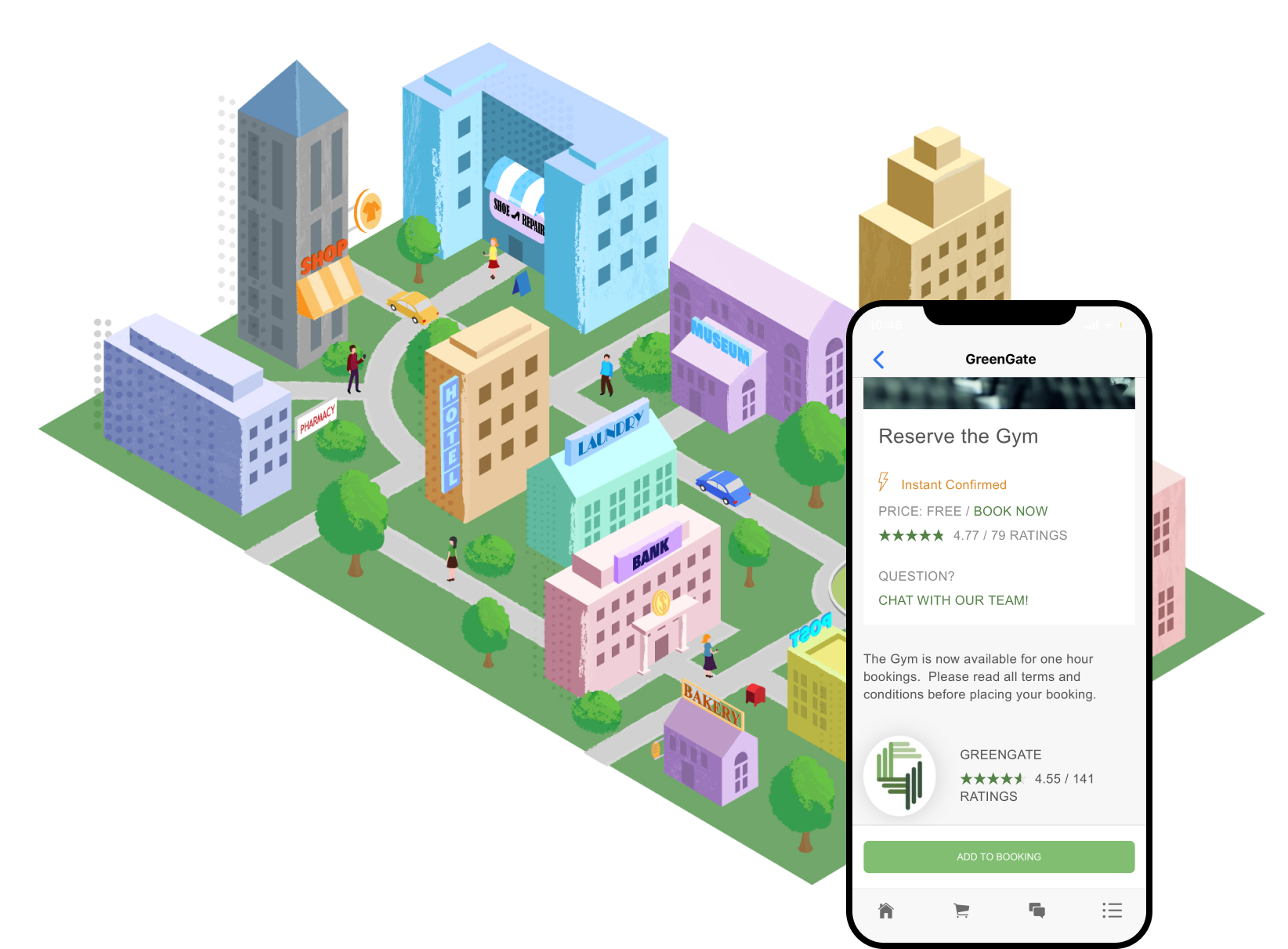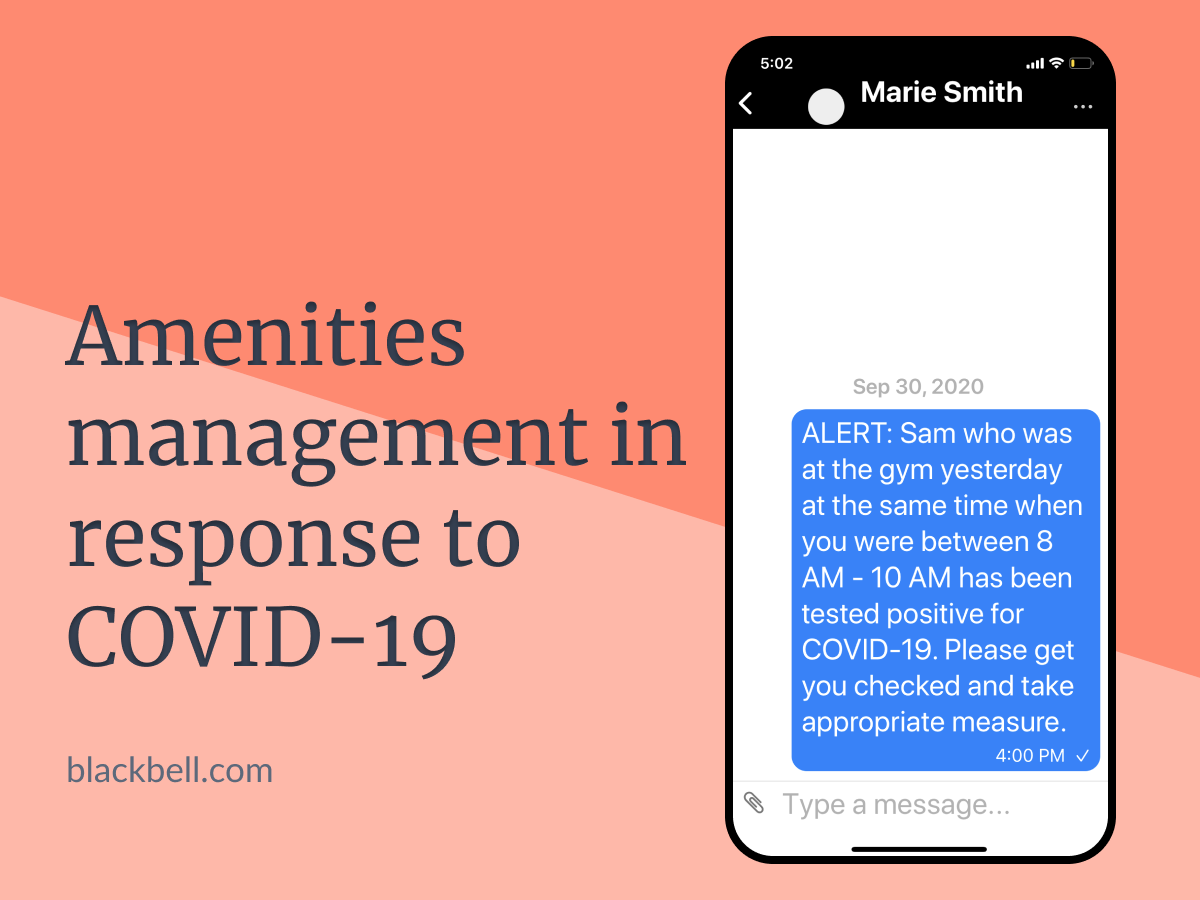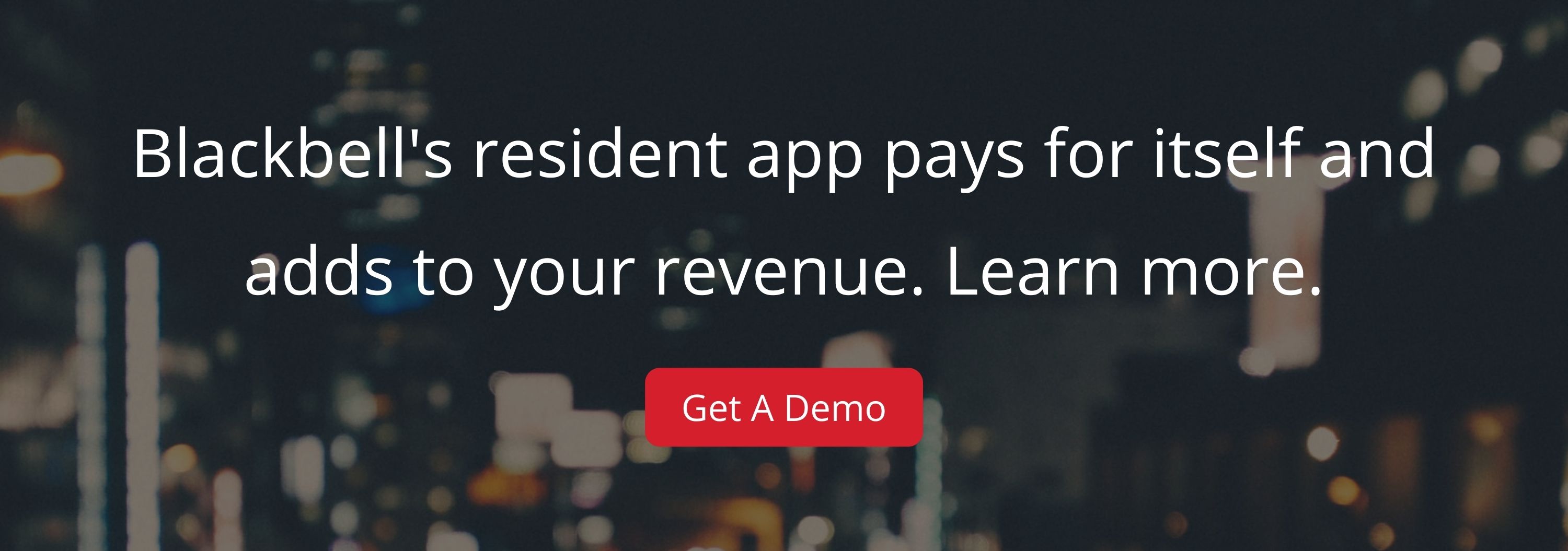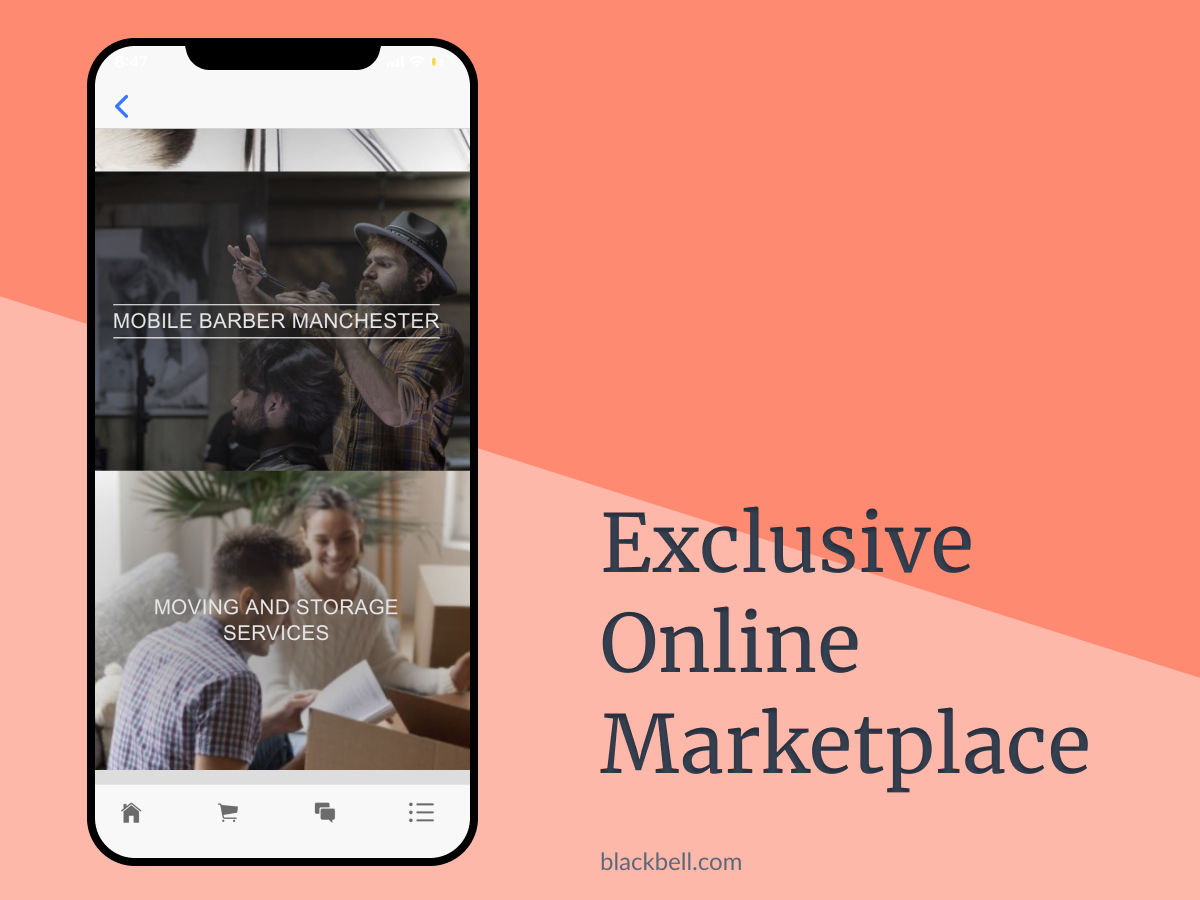Multifamily & COVID-19: The definitive guide to digital transformation
We now live in an increasingly digital society.
It has accelerated the usage of technologies like video conferencing and online bookings in our day-to-day lives.
Businesses all over the world have new challenges to deal with and new opportunities to pursue. Those who will adopt fast and adopt in the right direction will be the winners.

With post-pandemic priorities like social distancing, contactless servicing, touchless technology and remote working, multifamily housing is now at the crossroads — respond to the new reality most effectively and stay competitive or maintain status quo and fade into oblivion.
Whether you are a multifamily owner, operator or investor, you now have greater responsibilities towards the safety of your residents and your staff while keeping the business viable at the same time.
Today I am going to show you exactly how digital transformation can help you retain residents, achieve high occupancy, improve rent growth and position your Multifamily business for the future in response to COVID-19 pandemic.
And accomplish all that without struggling with baffling technologies that can cost an arm and a leg.
Let’s dive in.
Multifamily and COVID-19: What is the digital transformation?
Digital transformation in a multifamily housing means a shift to a fully-integrated digital platform to manage property operations virtually.
Such a transformation empowers the operators to efficiently manage housing operations even during pandemics like COVID-19 as well as help property owners and investors to gain full visibility and control over property operations.
If you are not a tech person, then you may find digital transformation a daunting task. However, an understanding of the essential aspects and scope of it can smooth things out. Here are the two critical parts of the digital transformation:
- Resident app: Resident apps can be a powerful vehicle for multifamily digital transformation if they are easy to adopt, easy to use, versatile to suit different needs, flexible for quick upgrades and don’t cost a bomb.
- Admin app: In these times of Coronavirus, property owners and investors must be able to have full visibility into property operations and access to data points for quick decision making. A thoughtfully designed admin app can exactly deliver on these requirements.
You should adopt a technology that can enable both — a resident app and an admin app.
I am going to discuss how digital transformation can help you win over key operational and strategic challenges during and post COVID-19 era.
Specifically, I am going to discuss:
- Impactful Communications
- Safe, Controlled & Trackable Amenities
- Engaging Virtual Events
- Secure & Efficient Parcel Management
- Delightful Maintenance
- Contactless Visitor Screening
- Voice of Residents
- Fully vetted online marketplace of local vendors
- Integrated Analytics
- Flexible & Scalable Tech for uncertain times
1. Impactful Communications
I can not stress enough the importance of thoughtful, empathetic and timely communication with residents. Surveys after surveys indicate that proactive communication with the residents is the number one factor for high resident satisfaction. Residents usually understand and accept the challenges and shortcomings of the owners and operators if they feel involved and listened to.
On the other hand, a lack of thoughtful communication can quickly lead to confusion, frustration and deep resident discontent. Such circumstances pave the way for resident churn and in the long run, can also hurt the brand value of the management.
So how can operators communicate with the residents so that the residents feel most engaged in these times of social distancing imposed by COVID 19 crisis?
Emails, social media and messenger apps could be the answers, but they lack a unified communication experience and can lead to the mess of messages being all over the place.
A resident app, on the other hand, is a central hub for all your resident communications. Whether you want to broadcast important updates to all your residents or connect with a specific tenant, you can do it right within your app.
For the residents, it becomes super easy to find all communications in one place. It thus reduces the likelihood of missing out on critical updates about the pandemic and day-to-day operations.
If you have selected the right app, you might also be able to create standard message templates and use them in no time without worrying about comprehension mistakes and miscommunication.
2. Safe, Controlled & Trackable Amenities
Here’s the truth:
Amenities are one of the key selling points in the multifamily market. Prospects and tenants consider them as differentiating factors while comparing different options.
However, managing amenities while working under the constraints like social distancing and contactless service imposed by COVID-19 can be challenging.
And if not adequately monitored, amenities can be the hotspot for virus spread.
You need ways to restrict capacity, mandate advance bookings, facilitate contactless self check-ins and monitor the usage. You would also need the usage tracking ability to alert all residents in case someone who has recently used an amenity found to be infected with the virus.
And do all that in a frictionless manner without to-and-fro communications.
As you might have guessed, such workflows are almost impossible to implement using manual, emails or excel sheets based processes and can excessively burden a property manager.
Your resident app, however, can implement these flows smoothly. For each amenity, you can create a booking form and provide the number of the slots available. If your app offers the online check-in facility, then while using amenities, residents can check-in and check-out themselves and help you track the usage. This way, you will be able to alert residents in case of any virus spread. If such a feature is not available, then you should ask your vendor to design and implement it for you.
Another aspect of amenities management during Coronavirus is responding to the new needs of the residents. With more and more people working from home, operators are reporting the demand for co-working spaces within the properties.

If your admin app is designed to provide you with usage analytics, then you can predict the level of amenities usage on any given day. Your team can use these insights to turn amenities spaces into flexible co-working spaces during weekdays.
And then on weekends, these co-working spaces can give way back for amenities and community spaces.
Another area where usage analytics can help you is in taking data-backed decisions to select and offer amenities and activities that the resident will really use and pay for during the pandemic instead of investing in things that are not in demand. This way, youc an run very effective yet lean operations, improve tenant engagement and increase return on investments.
You should select the app platforms that can provide you with flexible booking workflows for various types of amenities and analytics to respond to the changing needs of your residents.
3. Engaging Virtual Events
With outdoor events going out of favour due to COVID-19, online communities and virtual events have become the backbone of community building in the multifamily sector. Such events enable multifamily renters to socialize and feel connected while observing social distancing.
Virtual events on workouts, Yoga, cooking, DIY crafts, poetry, literature, gardening, giveaways and the likes, can compensate for the restrictions on outdoor activities to a large extent.
To successfully organize virtual events you need a digital booking flow that you can customize to suit the event type, facility to collect online payments, a way to virtually capture residents’ participation and a way to capture residents’ feedback after the event.
Whether your property has on-site community managers or not, an understanding of residents’ participation and feedback is necessary. Organizing more and more online events does not necessarily lead to higher resident satisfaction. But, it sure leads to higher expenditure.
Repeatedly organizing events that residents do not enjoy can also alienate them away from all other community engagements.
Your resident app should enable customized booking flows for different types of events as well as simple interfaces to capture residents’ participation and feedback. The admin app should help you easily view the responses along with the event analytics.
4. Secure & Efficient Parcel Management
With multifamily renters staying in their apartments most of the time, we see a surge in online shopping . From a safety perspective, it is a good development. However, with a rise in online shopping comes the surge in parcels that your staff has to manage on a day-to-day basis.
To successfully manage parcels in multifamily housing, your staff has to collect parcels from delivery agents, sort and store them in a safe storage area, notify residents about their packages and in some cases, deliver parcels directly to the residents’ doors.
This is a lot of work and can quickly drain your staff. You will have to hire new staff to manage other property concerns to maintain service levels. Thus parcel management can turn into a huge cost centre.
Parcel management becomes more tedious when residents start ordering perishable groceries, heavy appliances and oversized furniture.
Another area of concern is the theft and damage of parcels within the properties despite the best efforts by your on-site teams.
Digital transformation eats away all the complexities involved in multifamily parcel management, reduces the manual work, frees up the staff, minimizes parcel theft, lowers the operating costs and creates an elevated resident experience.
Your resident app should be able to scan and track parcels, take images and very importantly, notify residents. These notifications should be automated so that there are only minimal staff involvement and no scope for manual errors.
The resident app should also have the functionality to integrate with smart lockers and digital rooms to provide a seamless experience.
Your admin app should provide you data into the volume of parcels collected, delivered and lost. If the app is well designed, it can also use analytics to provide insights for manpower budgeting and cost allocations.

5. Delightful Maintenance
Maintaining multifamily properties is a multifaceted task, especially when social-distancing and unprecedented hygiene levels have to be kept due to the Coronavirus.
Maintenance works like the replacement of lightings in common areas, plumbing and electrical works, lift maintenance, pest control etc. need immediate attention. Without necessary systems in place, property maintenance can become cumbersome for the property managers and stressful for the renters of multifamily housing.
Residents can find it difficult to register the maintenance issues in-person and reaching them over the phone might need back-and-forth communication. Delay incommunication can lead to a delay in the resolution of maintenance issues. Since most maintenance issues directly affect the living experience of the residents, any delay in their resolution can affect the overall resident experience.
Maintenance issues promptly addressed can keep costs down, improve property life and enable residents to enjoy a safe and pleasant living experience.
Resident apps can help you and your on-site team easily manage maintenance issues. Instead of untrackable offline communications, residents can raise maintenance tickets
from their app. Both residents and your staff can track these tickets online. Residents and authorized staff members can also grant entry permissions to relevant techniciansin response to these tickets.
With the online status updates of each maintenance ticket, your on-site team can update the residents in real-time about the resolution of the maintenance issues.
By facilitating the timely and prompt resolution of the most pressing maintenance issues, your resident app can convert frustrating maintenance problems into delightful interactions for the residents.
6. Contactless Visitor Screening
COVID-19 has put restrictions on the people who can enter your multifamily real estate and come in contact with your residents.
Screening visitors and keeping a record of their identity have become essential, but doing these manually can take a toll on your staff.
This is a classic use case of a resident app.
Your resident app should empower your property for easy check-ins, check-outs and digitally keep a record of all visitors. It should also automatically send notifications to the residents about the visitors. This will free up your staff and make them available for other pressing needs.
7. Voice of Residents
The measures that you are taking to elevate resident experience have no value unless residents find them valuable.
Costly amenities and trending community events will serve no purpose if residents do not feel excited about them.
The workflows designed for measures like social-distancing in response to COVID-19 will have no impact if your on-site team finds it challenging to implement them.
A key benefit of the digital transformation for multifamily owners, investors and operators is the ability to virtually survey their residents and on-site staff to get the pulse.
And you need not send out lengthy, painful surveys.
With the help of your resident app, you can push out micro-surveys asking only one or two questions at a time. You can send such short surveys quite often tracking people’sf eelings about the changing circumstances and learn a great deal about them.
These micro-surveys can come across as a part of your proactive outreach in contrast to lengthy annual surveys that are sometimes seen as a data collection activity and are not responded sincerely.
Whether you want to decide on a new virtual event, invest in the renovation of the community space or understand residents’ overall well-being during a pandemic likeCOVID-19, you can push out a short survey via your resident app and gain valuable insights. Among other things, these insights can help you predict multifamily demand.
8. Fully vetted online marketplace of local vendors
COVID-19 restrictions might have locked residents inside their homes, but it has not stopped people from needing local services like dry cleaning, pet care and grooming services.
What has changed is the degree of precautions required to connect residents with local service providers safely.
An online marketplace of vetted local service providers within your resident app, coupled with contactless visitors’ screening can help your residents with their day-to-day needs without risking their well-being to COVID-19.
Such a marketplace can also compensate for the lack of amenities within your property. For example, an old multifamily building that is facing competition from newly developed properties providing all kinds of amenities to their residents can build an online marketplace for their residents and connect them with vetted vendors for their needs and luxuries.
This way, old multifamily units can remain competitive and even achieve rent growth.
If your property is not in a prime location, then you will immensely benefit from building a local online marketplace within your resident app. Your residents will have access to all the facilities and services right inside their resident app whether those services are located nearby or not.

If that is not enough, an online marketplace can also uniquely help you and your residents in building a thriving community. You can allow residents to offer their services
on your property’s marketplace to other residents. Such an arrangement can help your residents connect with each other as well as earn additional income. This way, you can also help your residents earn extra income, especially when some of them might be facing financial hardship during economic downturns like the one we see now due to Coronavirus.
You should look for a tech vendor that can design a resident app to support the online marketplace. Since building a marketplace of vetted vendors is not just a tech play, you should also inquire if your vendor has prior experience building local marketplaces.
9. Integrated analytics
There are two ways for the digital transformation of your multifamily property:
- Work with different niche vendors and launch multiple apps, i.e. an app for parcel management, an app for amenities management, an app for visitors’ screening and so on, OR
- Work with a vendor who can help you launch an all-in-one app for the complete digital transformation.
For most of the multifamily properties, selecting an all-in-one app is the best way for digital transformation. You will work with one vendor and have one app for all activities. It is also easy for your residents to install one app on their phones for all of their requirements.
An all-in-one resident app will provide you with full view and control over your property operations. However, a significant and unique advantage of an all-in-one app is end-to-end analytics.
Say, for example, a resident who had gone out to meet a friend earlier in the day, receives a notification on her resident app about the arrival of her parcel from Amazon. She collects the parcel from the storage room and then goes to the gym within the property. Later on, she was found to have contracted Coronavirus. In this case, an all-in-one app with its fully integrated analytics can quickly help you alert those who might have come in contact with her in the gym, in the parcel storage room and at the property entrance during check-in. Thus an all-in-one resident app can help you limit the virus spread.
You can use end-to-end insights to respond to unfolding events during and after coronavirus pandemic quickly.
The only scenario where I can see the advantage of launching multiple independent apps over an all-in-one app is in case of the properties that already have some digital platform and want to add extra powers in it to compensate for its shortcomings.
10. Flexible & Scalable Tech for uncertain times
If you do not have a tech background, technology can baffle you. A technology that can solve a problem at one scale can or can not solve it at another scale. As a multifamily owner, investor or operator looking to adopt a resident app, you should understand two crucial attributes of the technology — flexibility and scalability.
Flexibility
Technology is flexible if it allows you to adjust it for new needs by adding new features quickly. In the case of a Resident app, you should look for an app that does not needs everal months of development to get launched or to add new features.
You should look for an app that can adapt to the new needs in almost real-time. This way, you can readily launch new workflows and new features in response to emergencies like COVID-19 pandemic without wasting time on software development.
A resident app built on a flexible technology can readily help you implement new features like online renewals of lease and simplify the leasing activity.
Rent payment is another area where your digital platform can help you to improve efficiencies. As a property owner, you should adopt solutions that are versatile and can give maximum return on investment.
Scalability
Technology is scalable if it can adapt to increase in usage without affecting its performance. During Coronavirus, demand for and use of video conferencing apps suddenly went through the roof. Apps built on scalable technology performed well while apps not built on scalable technology started throwing various errors.
In the same context, the resident app that you should select for your multifamily business should keep performing in case all of a sudden residents start using it more because they are staying at home all day.
Without scalability, your app will break when it is most needed.
Conclusion
Resident apps are immensely beneficial to the multifamily owners and operators to carry out the digital transformation. However, selecting the right app is an important decision that can makeor break your digitization project. You should choose a resident app that can not only satisfy your current needs but is also flexible enough to meet new needs in real-time in the future.
Timely and appropriate digital transformation of multifamily assets can help real estate investors maximize their investment returns and stay ahead of the market.
That’s all I wanted to talk about multifamily and COVID-19 today. Leave a quick comment and let me know your thoughts on the digital transformation in the multifamily industry and other commercial real estate units.
Blackbell offers powerful resident and admin apps for multifamily properties. To see how we can help you in the digital transformation of your property, click here to book a demo.






